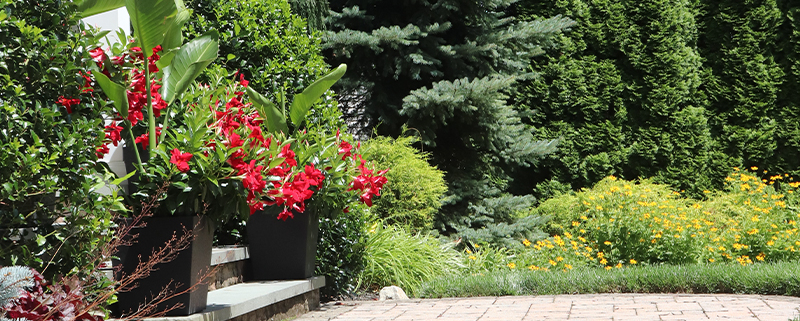Colorful Summer Blooms: Choosing the Right Plants for Season-Long Vibrancy
Summer is a vibrant time of year, and your garden can reflect that with the right selection of plants. Choosing blooms that thrive in the New Jersey climate and maintain their color from early summer through fall can create a stunning display in your landscape. Whether your garden enjoys full sun or sits mostly in the shade, here are some top recommendations and tips on arranging them for maximum visual impact.
Sun-Loving Flowers for a Radiant Garden
- Black-Eyed Susan (Rudbeckia hirta)
- Bloom Time: Mid-summer to early fall
- Color: Bright yellow petals with dark brown centers
- Care: These hardy perennials thrive in full sun and well-drained soil. They’re drought-resistant and attract pollinators like bees and butterflies.
- Zinnia (Zinnia elegans)
- Bloom Time: Early summer to first frost
- Color: Wide range including red, pink, orange, yellow, and white
- Care: Zinnias prefer full sun and well-drained soil. Regular deadheading encourages continuous blooming.
- Salvia (Salvia splendens)
- Bloom Time: Early summer to fall
- Color: Spikes of red, purple, or blue flowers
- Care: Plant in full sun with well-drained soil. Salvias are relatively low-maintenance and drought-tolerant.
Shade-Tolerant Blooms for a Cool Retreat
- Impatiens (Impatiens walleriana)
- Bloom Time: Late spring to first frost
- Color: Shades of pink, red, white, and purple
- Care: Ideal for shaded areas, impatiens need moist, well-drained soil. They provide continuous color throughout the growing season.
- Hosta (Hosta spp.)
- Bloom Time: Mid-summer
- Color: Variegated foliage with white, lavender, or blue flowers
- Care: Hostas thrive in partial to full shade and prefer rich, well-drained soil. They add texture and color with their striking foliage.
- Astilbe (Astilbe spp.)
- Bloom Time: Early to mid-summer
- Color: Plumes of pink, red, white, and purple flowers
- Care: Astilbes do best in partial shade and moist, well-drained soil. They are great for adding height and texture to shaded areas.
Arranging Your Garden for Visual Impact
- Layering Heights: Place taller plants like Salvia and Black-Eyed Susans at the back of your garden beds, with mid-height plants like Zinnias and Astilbes in the middle, and shorter plants like Impatiens at the front. This creates depth and ensures all blooms are visible.
- Color Coordination: Choose a color scheme that complements your home and garden. You can opt for a harmonious palette (different shades of the same color) or a contrasting palette (colors opposite each other on the color wheel) for a striking effect.
- Continuous Bloom: Combine plants with different blooming times to ensure your garden remains colorful all season. For instance, pair early bloomers like Zinnias with late bloomers like Black-Eyed Susans.
- Foliage Variety: Incorporate plants with interesting foliage, like Hostas and Coleus, to add texture and color even when flowers aren’t in bloom.
Maintenance Tips
- Watering: Regular watering is crucial, especially during dry spells. Morning watering is best to prevent mildew and other diseases.
- Fertilizing: Use a balanced fertilizer to promote healthy growth and vibrant blooms.
- Deadheading: Remove spent flowers to encourage new blooms and keep plants looking tidy.
By carefully selecting and arranging plants that thrive in New Jersey’s climate, you can enjoy a colorful and vibrant garden all summer long. Happy gardening from LaCorte Landscapes LLC!



Leave a Reply
Want to join the discussion?Feel free to contribute!